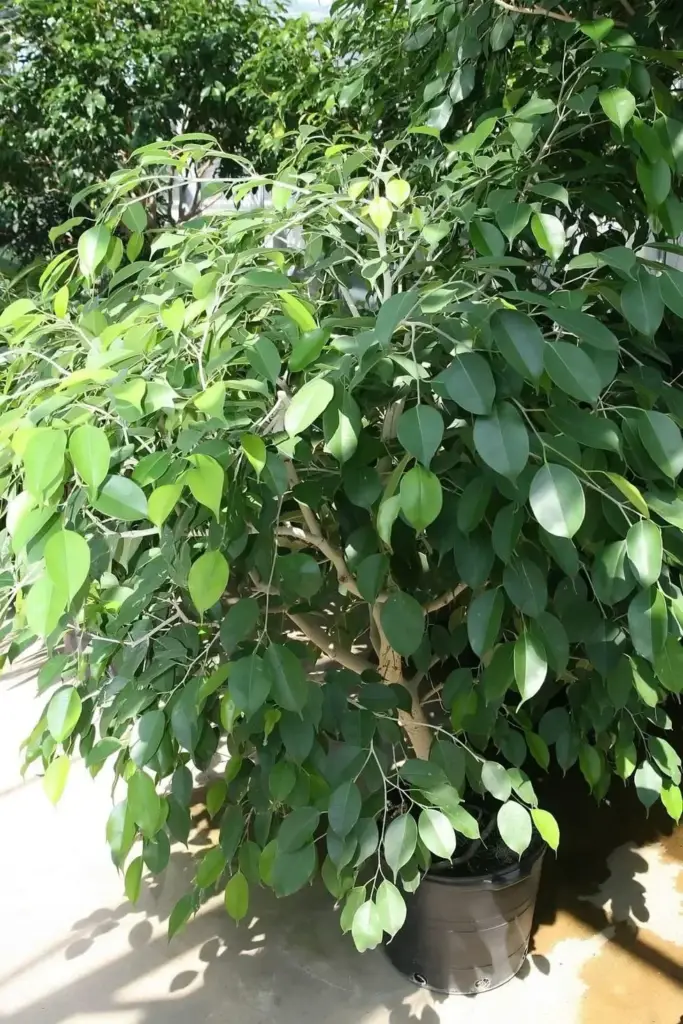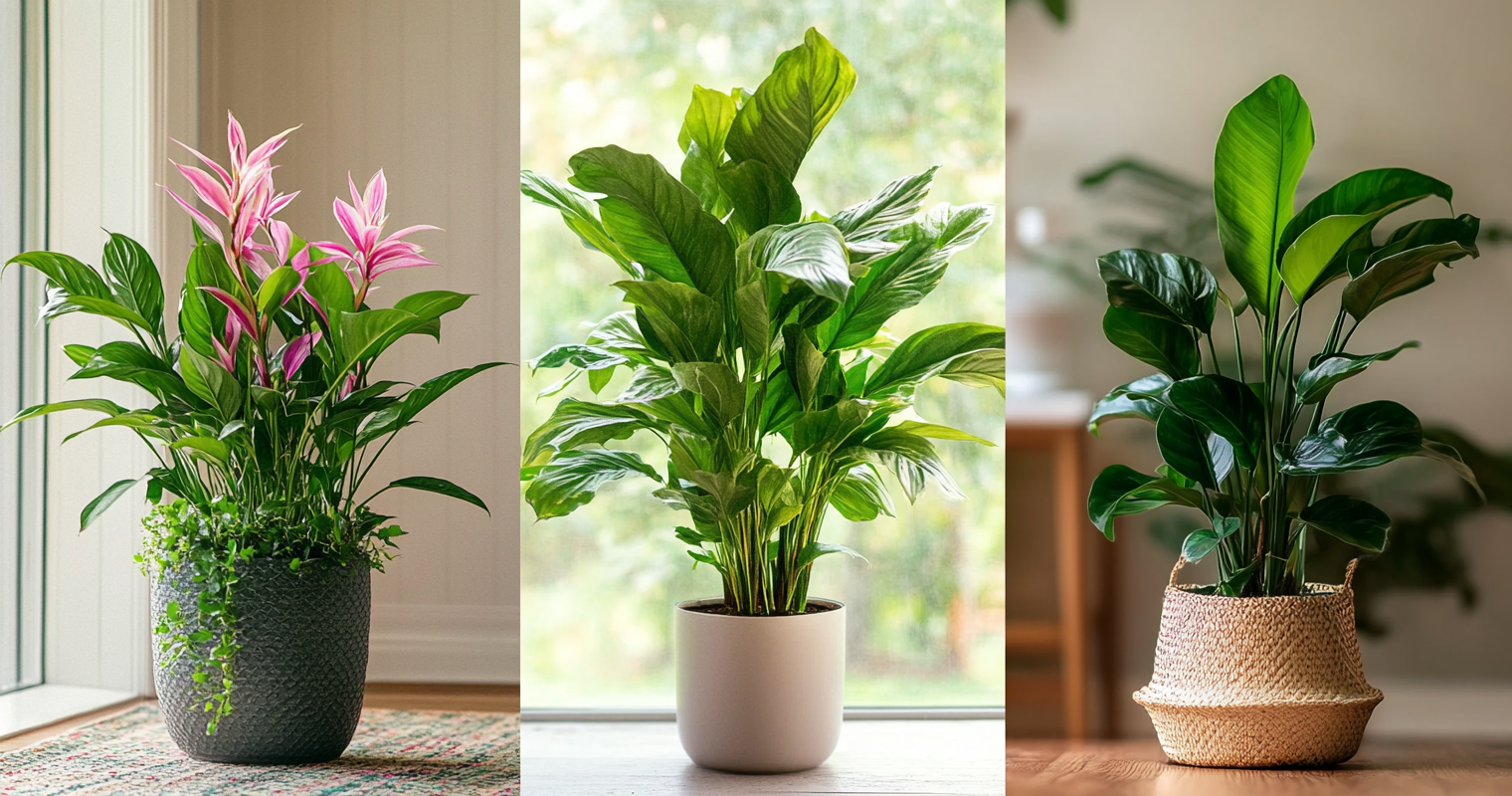Indoor plants serve a crucial role in improving air quality by filtering out harmful pollutants. Many of these plants are not only effective at cleansing the air but are also easy to care for, making them perfect for homes and offices alike. Studies, including the well-known NASA Clean Air Study, have highlighted how specific plants can enhance oxygen levels while significantly reducing toxins in indoor spaces.
With a variety of options available, individuals can choose from a range of aesthetically pleasing plants that thrive in diverse light conditions. From the resilient Spider Plant to the elegant Peace Lily, these green companions offer both beauty and functionality. It is clear that incorporating these natural air purifiers into living spaces can create a healthier environment.
Key Takeaways
- Indoor plants actively improve air quality by removing pollutants.
- Many effective air-purifying plants are easy to grow and maintain.
- A variety of plants can thrive in different light conditions, making them suitable for any space.
Plants That Clean the Air
Indoor plants can serve as valuable allies in improving air quality. Many common types can absorb harmful substances such as formaldehyde, benzene, trichloroethylene, and xylene, which can be found in everyday items like cleaners and furniture wax. For instance, the parlor palm not only enhances humidity in dry environments but also helps filter out indoor toxins including carbon monoxide and ammonia. Moreover, ferns thrive in high humidity and play a critical role in air purification by reducing harmful volatile organic compounds found in indoor air. Regular care, including well-drained soil and adequate watering, supports these plants’ health.
Dwarf Date Palm
The dwarf date palm is a resilient and drought-tolerant plant, known for its slow growth. Once fully matured, it can reach a height of 8 to 10 feet and live for many decades. Its leaf stems are armed with sharp spines that can easily penetrate skin and clothing, so caution is advised when handling it. This palm is particularly valued for its air-purifying qualities, especially its ability to filter out xylene. For the best air-cleaning results, it is suggested to have at least one dwarf date palm for every 100 square feet of indoor space. This makes it a great addition to any home or office environment.

Boston Fern
The Boston fern is well-suited for environments that are low in light and high in humidity, making it perfect for spaces like bathrooms. This plant thrives on the moisture generated during showers, which keeps it hydrated with minimal care. Beyond its decorative appeal, the Boston fern is effective at filtering indoor air. It is noted for its ability to remove harmful toxins such as xylene and formaldehyde, making it an excellent choice for improving air quality in the home.

Kimberly Queen Fern
The Kimberly Queen Fern stands out for its upright growth, unlike the sprawling Boston fern. This fern, native to Australia, handles higher temperatures and more sunlight than its counterpart. Regular watering is crucial to maintain its health. Its ability to thrive both indoors and outdoors makes it a versatile choice for various settings. It can enhance spaces like patios or decks, especially in areas near garages, where it can help filter out xylene found in vehicle emissions. With its tidy appearance and adaptability, the Kimberly Queen Fern is an attractive addition to any plant collection.

Spider Plant
The spider plant is a remarkable indoor plant known for its air-purifying qualities. It effectively eliminates harmful substances like formaldehyde and carbon monoxide. In a NASA study, it was found that this plant could remove up to 95% of formaldehyde from the air within just 24 hours.
A unique feature of the spider plant is its ability to produce spiderettes. These are small shoots that grow from the main plant and can develop into new baby spider plants, which are easy to transplant. Caring for a spider plant can enhance well-being, as tending to plants often makes people feel more relaxed and happy.

Chinese Evergreen
The Chinese Evergreen is a hardy plant, perfect for enhancing spaces like desks or living room tables. Its lance-shaped leaves display attractive blends of gray, green, and silver. This resilient plant thrives in low to medium light conditions and grows slowly, with a lifecycle that can extend up to 10 years. Not only does it add beauty to the home, but it also helps purify the air by filtering out harmful substances like formaldehyde and benzene.
However, care is needed if pets or young children are present, as this plant is toxic if ingested. It is advisable to check the ASPCA list of plants that may be harmful to pets before bringing one into the home.

Bamboo Palm
The bamboo palm, scientifically known as Chamaedorea seifrizii, adds height and elegance to any indoor space while helping to purify the air by filtering out toxins such as benzene and formaldehyde. This plant also increases humidity, making it beneficial during dry winter months. Care for a bamboo palm includes providing bright, indirect light and ensuring it receives monthly fertilizer. Regular misting is important too, as this plant prefers moisture. When it grows too large for its pot, it should be re-potted every two to three years to thrive properly.

Weeping Fig
The weeping fig, also known as Ficus benjamina, is known for its ability to remove harmful substances like formaldehyde, xylene, and toluene from the air. These toxins often come from household items such as cleaners and stain removers. This plant is low-maintenance and thrives away from direct sunlight, making it perfect for various rooms. With proper care, it can be a lasting addition to homes for many years, adding both beauty and cleaner air.

Golden Pothos
Devil’s Ivy, commonly known as Golden Pothos or by its scientific name, Epipremnum aureum, is celebrated for its air-purifying abilities. It effectively removes harmful substances such as benzene, formaldehyde, and xylene from indoor environments. This plant is an excellent choice for beginners due to its hardy nature, lush appearance, and affordability.
Devil’s Ivy can grow impressively long, reaching up to eight feet, making it versatile for different settings. It can hang from a basket, trailing gracefully downwards, or be placed in a pot to climb up a trellis or totem. Alternatively, it can spread out horizontally on furniture like a coffee table or mantel, adding a touch of green to any room.

Flamingo Lily
The Flamingo Lily, or Anthurium, is notable for its vibrant red, heart-shaped flowers. This hardy evergreen plant not only adds color to any space but also functions as a natural air purifier, removing harmful substances like formaldehyde and ammonia. Caution is advised, as it is toxic to both pets and children. Careful placement and maintenance can help it thrive while keeping the environment safe.

Lilyturf
Lilyturf is a favored ground cover known for its sharp, grass-like leaves and beautiful blue or white flowers. While it typically thrives outdoors, it also flourishes as a houseplant, especially on sunny windowsills. This plant not only adds aesthetic appeal but also helps purify the air by filtering out harmful substances like trichloroethylene, xylene, and ammonia. It can be an excellent choice to enhance both the look and air quality of office spaces or home offices.

Broadleaf Lady Palm
The Broadleaf Lady Palm is commonly seen in places like shopping malls and offices due to its ability to thrive in low light conditions. It can grow up to six feet tall, making it an impressive addition to dimly lit areas in homes. These palms require consistent watering to keep the soil moist. Additionally, they are beneficial for indoor air quality as they can remove harmful substances like formaldehyde, ammonia, xylene, and toluene. This makes them a popular choice for enhancing indoor environments.

Barberton Daisy
The Barberton daisy, also known as the gerbera daisy, is recognized for its vibrant colors and cheerful appearance. Initially favored as outdoor plants, these flowers are now popular in floral arrangements. When grown indoors, they can bloom in various shades, including white, red, orange, pink, and purple, year-round. Each flower typically lasts four to six weeks. Apart from their beauty, the lush, dark green leaves help to remove toxins like formaldehyde, benzene, and trichloroethylene from the air. These daisies thrive in full sunlight with adequate water and prefer well-drained soil.

Cornstalk Dracaena
The Cornstalk Dracaena, also known as Dracaena deremensis, resembles a corn stalk, giving it a unique appearance in a pot. This plant is beneficial for improving indoor air quality by removing harmful substances like formaldehyde, trichloroethylene, and benzene. It is quite adaptable, thriving in low-light conditions and requiring minimal care, making it suitable for those who may forget to water occasionally. Its resilience makes it an excellent choice for homes and offices alike.

English Ivy
English ivy, or Hedera helix, is an excellent choice for spaces where salon treatments occur, as it effectively filters harmful substances like trichloroethylene, formaldehyde, benzene, and xylene. These toxins can be present in various salon products. This resilient plant thrives in low light with minimal watering, making it easy to maintain. Its attractive vines lend beauty when placed in a hanging basket, allowing them to trail gracefully. Incorporating English ivy not only enhances aesthetics but also contributes to a healthier indoor environment.

Variegated Snake Plant
The variegated snake plant, also known as Sansevieria trifasciata, thrives in humid environments, making it an excellent choice for bathrooms. This plant helps eliminate formaldehyde found in various household items like cleaning products and personal care items. When misted regularly, it can also enhance bedroom air quality by releasing oxygen during the night, which may promote better sleep. Its adaptability makes it a popular option for many home settings.

Red-Edged Dracaena
The red-edged dracaena, known scientifically as Dracaena marginata, is an excellent choice for enhancing indoor air quality. It effectively removes trichloroethylene, a common toxin found in various home improvement products, including paint strippers and adhesives. This plant can grow up to ten feet tall with a spread of three feet and can thrive for many years with proper care. Red-edged dracaena is widely available at home improvement stores, making it easy for anyone to add this attractive and beneficial plant to their living space. They are low-maintenance, making them ideal for both beginners and experienced gardeners.

Peace Lily
The peace lily, or Spathiphyllum, is renowned for its remarkable ability to purify the air. It effectively filters indoor air by taking in moisture and releasing it back, creating a comfortable environment. These plants also help reduce mold spores in the air. To promote flowering, it’s important to place them in bright morning light while avoiding harsh afternoon sun. Regular misting of the leaves and keeping the soil moist will support their growth. Peace lilies are economical additions, enhancing the beauty of any indoor space.

Chrysanthemums
Chrysanthemums, often seen during fall, are vibrant flowers that brighten up spaces. They can effectively reduce harmful pollutants, making them a practical choice for indoor decoration. To keep these plants thriving, place them in areas with bright, indirect sunlight and maintain a consistent watering schedule. Regularly removing spent blooms, known as deadheading, helps prolong their beauty. With proper care, chrysanthemums can bloom for six to eight weeks. Their seasonal appeal, combined with air-purifying qualities, makes these flowers a lovely addition to any home. Consider adding them to your fall decor for both aesthetics and health benefits.

Frequently Asked Questions
What indoor plants does NASA recommend for air cleaning?
NASA suggests several indoor plants that are effective at improving air quality. Some of the top choices include:
- Spider Plant: Known for its ability to absorb pollutants like formaldehyde.
- Peace Lily: Effective at reducing harmful toxins while also being easy to care for.
- Bamboo Palm: A natural humidifier that filters out benzene and formaldehyde.
- Dracaena: Comes in various varieties, known for removing xylene and formaldehyde.
How do air-purifying plants improve the quality of indoor air?
Air-purifying plants contribute to better indoor air quality by absorbing harmful pollutants and releasing oxygen. They can help reduce levels of certain toxins like formaldehyde, benzene, and carbon monoxide. The overall effect can lead to a fresher and cleaner living space.
Which plants are low-maintenance and effective for indoor air purification?
Several low-maintenance plants are great for improving indoor air quality. Some popular options include:
- Pothos: Thrives in various lighting conditions and helps remove indoor toxins.
- ZZ Plant: Requires minimal care and is effective at filtering out air impurities.
- Snake Plant: Tolerates low light and irregular watering while purifying the air.
What are the best plants for air purification in living rooms?
In a living room setting, the following plants can enhance air quality:
- Ficus: Helps remove formaldehyde and adds a decorative touch.
- Boston Fern: Known for its ability to filter out formaldehyde and other toxins.
- Rubber Plant: An attractive option that can absorb pollutants and improve indoor humidity.
Which plants are beneficial for improving air quality in bedrooms?
For bedrooms, these plants can aid in purifying the air:
- Aloe Vera: Releases oxygen at night and has healing properties.
- Lavender: Not only purifies the air but also promotes relaxation and better sleep.
- Gerbera Daisy: Known for removing benzene and creating a calming environment.
Are there outdoor plants that effectively clean the air?
Certain outdoor plants are particularly good at filtering air pollutants. Some notable examples include:
- Lavender: This aromatic plant helps cleanse the air and attracts beneficial insects.
- Rosemary: Known for its air-purifying qualities and culinary uses.
- Bamboo: Offers excellent air filtration while providing privacy and shade.


1 thought on “NASA Says These 18 Plants Are the Best at Naturally Filtering the Air in Your Home”